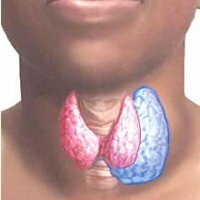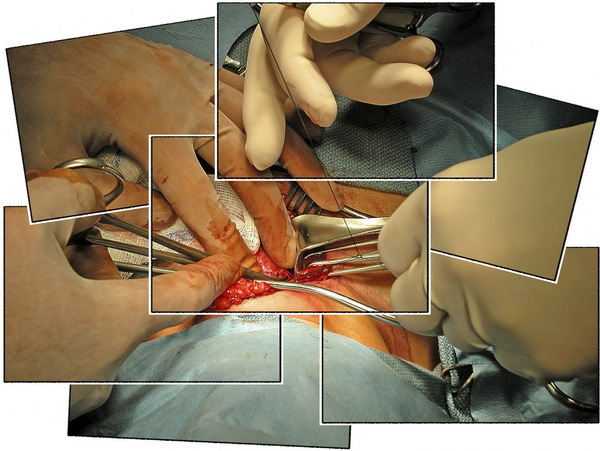Diffusive-nodular goiter

Diseases of the thyroid gland are so common today that they are on the second place after the diabetes mellitus in the list of pathologies of the endocrine system. According to WHO, today about 200 million people have a pathology of the thyroid gland, with about 40% of these are crabs of different etiologies.
A goiter usually refers to an increase above the norm of the thyroid gland - in men the norm is 9-25 ml, whereas in women the norm is 9-18 ml. The goiter can be nodular, mixed( diffuse-nodular) and diffuse.
With nodular goiter, a single node grows in the volume, and a conglomerate of multiple nodes of the shield may increase. Glands. With diffuse goiter, the thyroid gland increases rhythmically. With mixed diffuse-nodular goiter, as a rule, there is a nodal and diffuse increase. There is also a diffuse toxic goiter that develops because the thyroid gland begins to overproduce hormones. This goiter is also called Based's disease.
Causes of
Diffusive-nodular goiter can develop as a result of infectious damage, a hereditary factor( especially if this kind of goiter was in the immediate family), mental trauma, autoimmune processes. Other reasons for the development of this pathology include the sex and age factor( mainly found in women over forty), the environmental situation( this includes contamination of various types, the effect on the body of harmful substances, adverse sanitary conditions), the geographical factor( endemic diffuse-nodal goiter widelyIs common in areas where the iodine content is low).Also, if you eat foods that are not rich in iodine, a diffuse-nodular goiter may develop.
Symptoms of
Diffuse-nodular goiter in the initial stage of development is most often asymptomatic. The contour of the neck begins to change as the shield. The gland increases in volume, the goiter acquires noticeable forms and begins to squeeze organs located in the neighborhood, the trachea and esophagus. There are obvious symptoms: attacks of suffocation, a persistent dry cough, a feeling of squeezing the esophagus and trachea, a constant sensation of "coma" in the throat, hoarseness, visualization of the goiter.
Diagnosis
Pathology is diagnosed after clinical examination by an endocrinologist, which directs the patient to ultrasound, to the blood test for AT to TPO, free T4, TTG, AT to TSH, for TAB( ie fine needle aspiration biopsy or puncture biopsy, mostlyIf the volume of the palpable node exceeds 1 cm).
Treatment of
At an early stage of the disease development, conservative therapy is used with thyreostatic drugs, which are aimed at setting up the thyroid gland. If there is a rapid growth of goiter or medical treatment has proved ineffective, because of which the general condition of the patient only worsened, then they resort to surgical intervention.
Operative intervention is also used when there are large nodes that squeeze the neck organs in the presence of a retrosternal goiter, and also if a histological examination has shown the presence of atypical cells. Also, if the size of the nodes exceeds 3 cm and the volume of the thyroid gland is significantly increased, surgical treatment is performed.
Surgical intervention, as a rule, is carried out with the help of minimally invasive techniques. With this method, the intersection of the neck muscles for access is not required. After this method, no visible scars remain, so a good cosmetic effect is maintained.
The application of this technique significantly shortens the patient's stay in the hospital. The period is reduced to 4 days. Moreover, mini-access facilitates pain and rehabilitation, has good long-term performance.
I wanted to remind you that if improper treatment of diffuse-nodular goiter, complications may develop: the symptoms of hyperthyroidism increase, Basedova disease or thyrotoxicosis develop. It is not excluded that the general condition of the patient will deteriorate greatly. That is why when the first symptoms of diffuse-nodal goiter appear, it is recommended not to postpone the visit to the endocrinologist!



